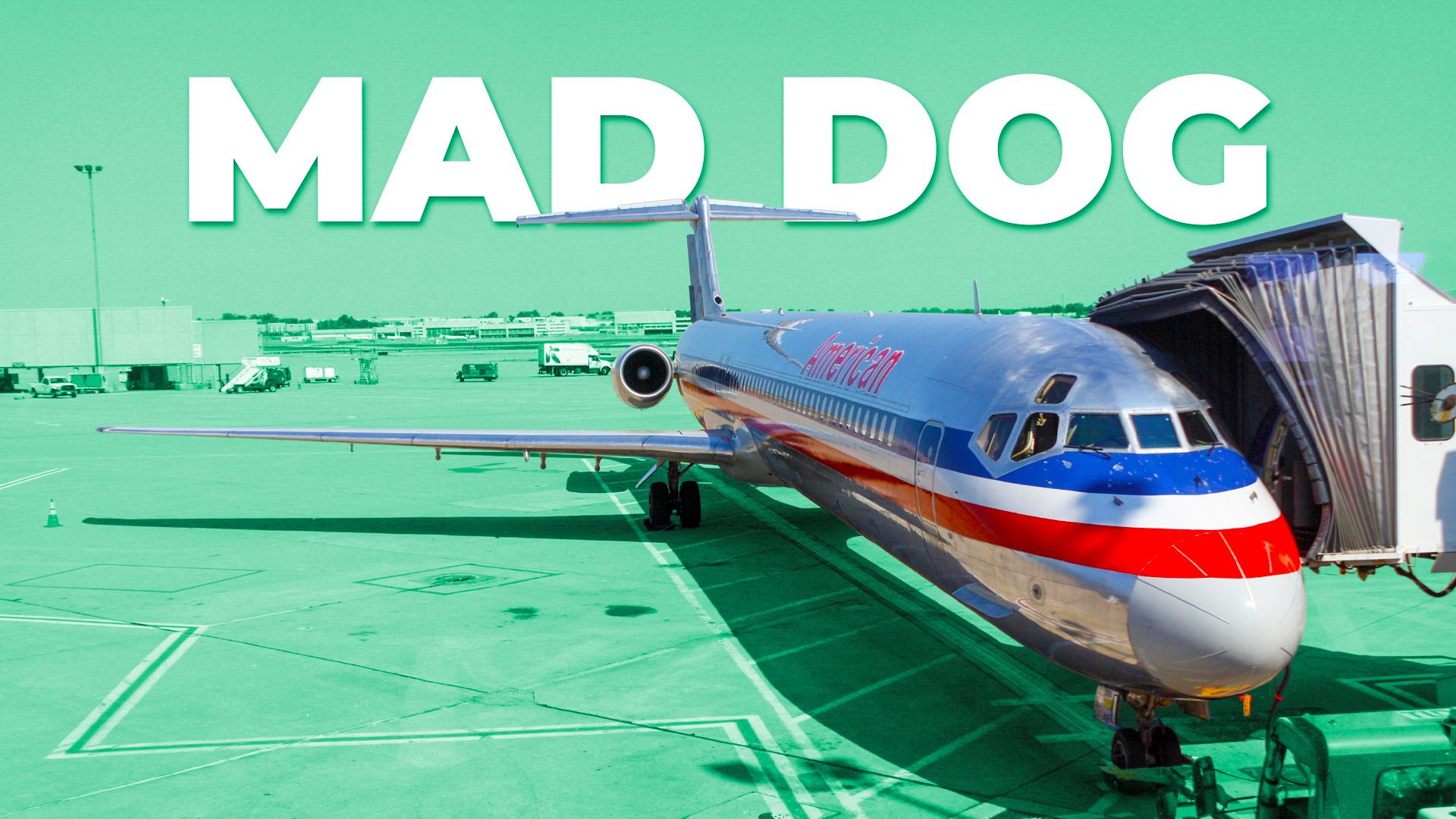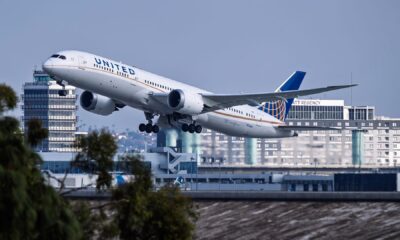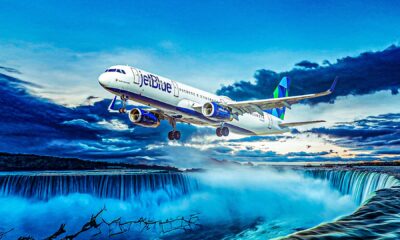World
MD-80: The Story Behind the “Mad Dog” and Its Legacy

The McDonnell Douglas MD-80, affectionately known as the “Mad Dog,” has earned its nickname due to its distinctive loud engines and unique flying characteristics. Even though the aircraft’s design, introduced in 1979, was considered outdated by the time of its retirement from American passenger service in March 2020, it remains a beloved icon in aviation history. Known for its retro appeal and a noisy cabin, the MD-80 left an indelible mark on the landscape of American commercial aviation.
The MD-80: A Workhorse of the Skies
During the 1980s and 1990s, the MD-80 became a reliable and cost-effective option for major airlines such as American Airlines, Delta Air Lines, and United Airlines. Its robust airframe and performance on short- to medium-haul routes made it a staple, with 40% of American Airlines’ fleet comprising the MD-80 at its peak. While newer, fuel-efficient aircraft began to dominate the market, the MD-80’s legacy endures, celebrated by pilots and crew members.
Despite its loud engines, which many passengers found uncomfortable, the MD-80 created a nostalgic connection with its operators. Pilot Julio Gomez expressed this sentiment in Time Magazine, stating, “I just cannot take that airplane to its grave. It’s just too heartbreaking… [The jet] basically was American Airlines.” Flight attendant Jennifer Brissette, who spent over two decades on the aircraft, noted the challenges of working in a noisy environment, saying, “I can tell you’ve been flying the Super 80 because you are yelling when you are talking.”
A Milestone in Aviation History
American Airlines was the first of the major U.S. carriers to operate the MD-80, contributing to its establishment as a key player in domestic air travel. The first passenger flight occurred from Santa Barbara Municipal Airport to Dallas/Fort Worth International Airport, with Captain Tom Senning at the controls. This flight marked the beginning of a significant chapter in American aviation history.
The MD-80’s design featured rear-mounted engines that initially aimed to create a quieter cabin experience than competing aircraft. Pilot and crew affectionately referred to it as the “Super 80,” and its long service fostered strong bonds among operators and frequent flyers. The aircraft’s production peaked in 1991, delivering up to 12 units per month, but it gradually declined as the aviation landscape evolved.
In the early 1980s, former American Airlines president Robert Crandall collaborated with McDonnell Douglas to enhance the aircraft’s marketability amid a rapidly changing airline industry. This partnership allowed American to expand its operations dramatically as the airline industry underwent deregulation.
Although newer aircraft models began to replace the MD-80 due to their improved fuel efficiency, this transition signaled the end of an era. The final MD-80s operated by Delta Air Lines were retired in 2021, marking the end of passenger service for this iconic aircraft in the United States.
Despite its retirement from American passenger service, the MD-80 continues to operate in various capacities around the world. Currently, there are over 100 MD-80s still active, primarily in cargo and firefighting roles. Airlines in countries such as Mexico and Iran utilize MD-80s for domestic flights, showcasing the aircraft’s lasting adaptability.
Although the MD-80 faced challenges from modern aircraft, including noise complaints and aging technology, its unique flying characteristics earned it a loyal following. Pilots appreciated its maneuverability and engaging manual flight controls, which contrasted sharply with the more automated systems of contemporary aircraft.
The aircraft’s Pratt & Whitney JT8D engines, while powerful, became increasingly noisy and less fuel-efficient over time. As airlines sought to meet stricter noise regulations and rising fuel costs, many opted to retire the MD-80 from their fleets, leading to its eventual decline in popularity.
The MD-80’s retirement represents more than just the loss of an aircraft; it signifies the end of a beloved chapter in aviation history. As Greg Kunasek, MD-80 Fleet Captain at American Airlines, remarked during the aircraft’s farewell, “People always ask me what I think of the airplane. I love airplanes; it’s my second home.” The MD-80 will be remembered as a pivotal aircraft that shaped the landscape of air travel for decades.
Specifications for the MD-80 highlight its impressive capabilities: it features a height of 29 feet 5 inches (8.97 meters), a wingspan of 107 feet 8 inches (32.82 meters), a range of 2,051 nautical miles (3,798 kilometers), a ceiling of 37,000 feet (11,278 meters), and a cruise speed of 499 knots (924 kilometers per hour).
As the aviation industry continues to evolve, the MD-80 remains a testament to the rich history of air travel, cherished by those who flew it and those who worked with it. Its legacy will continue to resonate with aviation enthusiasts and professionals for years to come.
-

 World4 months ago
World4 months agoScientists Unearth Ancient Antarctic Ice to Unlock Climate Secrets
-

 Entertainment4 months ago
Entertainment4 months agoTrump and McCormick to Announce $70 Billion Energy Investments
-

 Lifestyle4 months ago
Lifestyle4 months agoTransLink Launches Food Truck Program to Boost Revenue in Vancouver
-

 Science4 months ago
Science4 months agoFour Astronauts Return to Earth After International Space Station Mission
-

 Technology2 months ago
Technology2 months agoApple Notes Enhances Functionality with Markdown Support in macOS 26
-

 Top Stories3 weeks ago
Top Stories3 weeks agoUrgent Update: Fatal Crash on Highway 99 Claims Life of Pitt Meadows Man
-

 Sports4 months ago
Sports4 months agoSearch Underway for Missing Hunter Amid Hokkaido Bear Emergency
-

 Politics3 months ago
Politics3 months agoUkrainian Tennis Star Elina Svitolina Faces Death Threats Online
-

 Technology4 months ago
Technology4 months agoFrosthaven Launches Early Access on July 31, 2025
-

 Politics4 months ago
Politics4 months agoCarney Engages First Nations Leaders at Development Law Summit
-

 Entertainment4 months ago
Entertainment4 months agoCalgary Theatre Troupe Revives Magic at Winnipeg Fringe Festival
-

 Top Stories1 week ago
Top Stories1 week agoFamily Remembers Beverley Rowbotham 25 Years After Murder





















